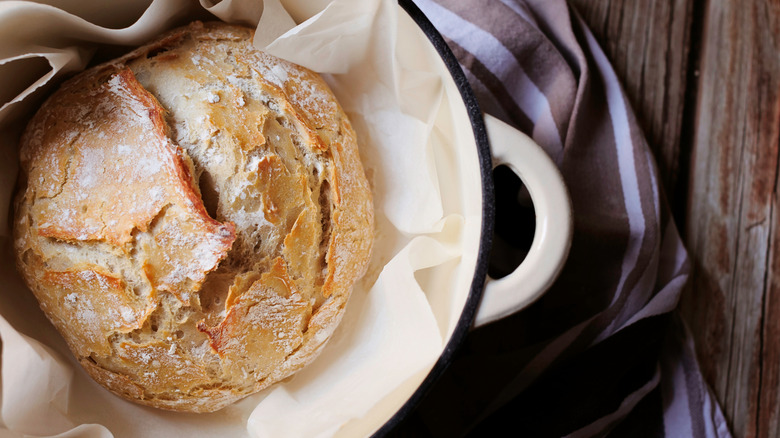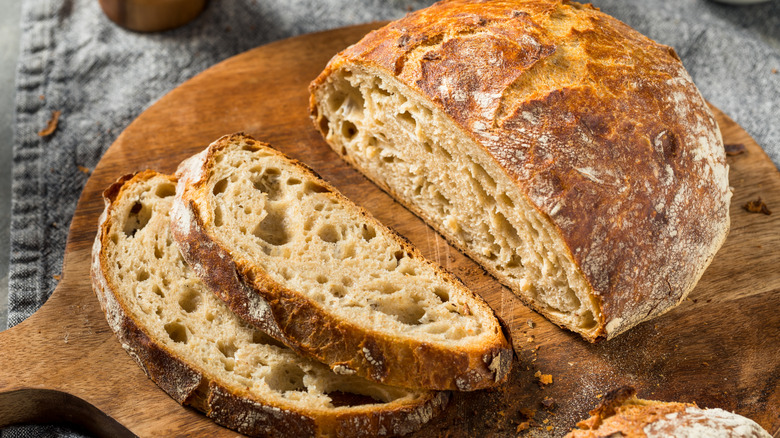You Can Make No-Knead Bread Without A Dutch Oven. Here's How
From easy pizza dough to chewy bagels from scratch, no-knead bread has a reputation for being almost laughably simple. Instead of kneading, time does the all the work for you, with a slow fermentation developing the gluten and building flavor. Most recipes call for baking no-knead bread in a Dutch oven, as they are efficient at trapping moisture as the dough bakes, creating the high-heat, high-humidity environment reminiscent of a professional steam-injected bread oven.
That steam keeps the crust supple just long enough for maximum oven spring, so the loaf rises tall with a crackly crust and an open, airy crumb. But here's the thing: a Dutch oven isn't strictly necessary, all it does is create steam and steady heat, and there are other ways to get both using different methods. To find out how, Food Republic spoke exclusively with Kent Rollins, host of Outdoor Channel's "Cast Iron Cowboy."
You can use a variety of different oven-safe alternatives that replicate the effect of a Dutch oven. Use a deep container or baking tray and cover the dough with a lid, or a sheet pan or cast iron skillet with a second pan of water underneath to create steam. In addition, for guaranteed perfect bread without a Dutch oven, Rollins recommends: "Either grind your own flour or buy bread flour and sift it when making the bread," which will help improve the crumb texture. "Use a temperature probe to check the proper doneness of the bread, which is 195 degrees Fahrenheit," he adds. It's recommended to pre-heat your vessel and oven prior to cooking to achieve a good oven spring and crusty exterior.
Alternatives for achieving a great crust and crumb
There are several ways to improve the flavor and structure of no-knead bread. When using non-conventional vessels, they don't guarantee the best results, as they may not hold steam or heat as well as a Dutch oven, so the bread might not rise as high or develop a crisp crust. However, there are ways to ensure you get a great crust and crumb every time, even without a Dutch oven.
Kent Rollins shares some additional tips to achieving a great crust and crumb: "I recommend greasing the pan with bacon grease or butter." In a Dutch oven, the sealed, preheated pot naturally helps create a crispy, caramelized crust. Without the Dutch oven, the bread is more exposed, so greasing the pan protects against sticking. The bacon grease or butter will also help encourage browning and give the crust a richer, more flavorful edge.
"[Make] sure your yeast is good and proofed before you start, and always use warm water no hotter than 110 degrees Fahrenheit to proof the yeast," Rollins adds. Since you won't have the Dutch oven's heat-trapping boost, you will be relying on a strong fermentation to develop a good oven spring. To do this, just mix the yeast with warm water and a pinch of sugar or flour. Always make sure there is bubbling before starting the dough. This process creates active yeast, which ensures your dough develops the open, airy interior typical of no-knead bread, even without a Dutch oven.


